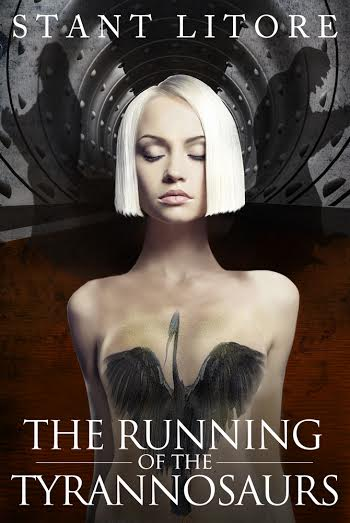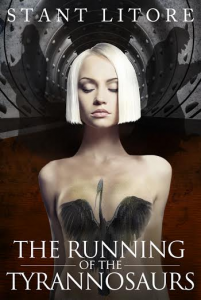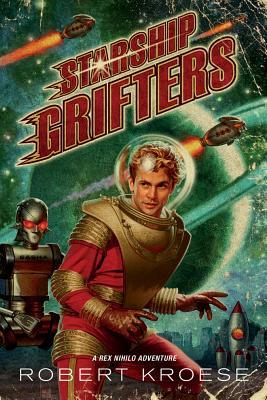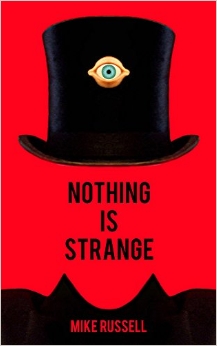The Running Of The Tyrannosaurs by Stant Litore
– Reviewed by Elanor Clarke –
The Running of the Tyrannosaurs, a stand-alone story, not quite a novella but a longer short story, tells a first-person account of a ritualistic, barbaric dinosaur race, run by naked, scientifically modified young women in some distant, dystopian future.
Despite being short, the scene-setting works well. Stant Litore manages to convey to the reader the environment Egret, our narrator, finds herself in, without having to resort to long asides. The premise of the story, though not entirely original (it could be looked at as a highly sexualised Hunger Games-esque story) is one that draws the reader in, and the storytelling is good. The pacing, in particular, keeps the reader interested, and the repetition of ‘watch’, along with some other phrases, lends an additional rhythm to the story, and makes the reader feel that they are part of the audience.
There are some problems with the text, one of which is that it is rather un-polished. There are poor word choices in places, and occasional unfinished sentences or phrases. Though fluent at times, at others the text is stilted and stuttering. Though Litore thanks an editor in the acknowledgements, it would seem that further attention is needed to make the story read as a professionally finished piece.
Further, though the story is populated by women, and told from the point of view of a young woman – a girl even – the male gaze is very evident in the voice used. Litore may be aiming to portray the world he has created as a negative – a future where girls are not respected as they should be, being used for entertainment, and where dinosaurs, resurrected by science, are treated as a commodity – however, this is somewhat clouded by the overt sexualisation used throughout the text. Egret is younger than 17, and throughout the text, despite being on top of a huge, feathered tyrannosaur, racing for glory and, indeed, her life, seems to be obsessed with her breasts. It’s natural that these would be mentioned, as the girls are naked and ‘perfected’ by nanites, but the sheer volume of mentions makes it harder to read the character as a believable young female, instead showing us her older male creator.
Further, the use of words and phrases like ‘fuck’ and ‘jerk off’ from a character who, we are told, has had her access to the outside world restricted – she can only watch what she is told to, and cannot interact with anyone of the opposite sex – seems very much out of place, and again, seems to be coming from the author rather than from Egret.
Despite its issues, The Running of the Tyrannosaurs is enjoyable to read, and shows promise. I have no doubt that Litore will continue to hone his writing, and perhaps we will eventually see a full collection of sci-fi short stories from him.






